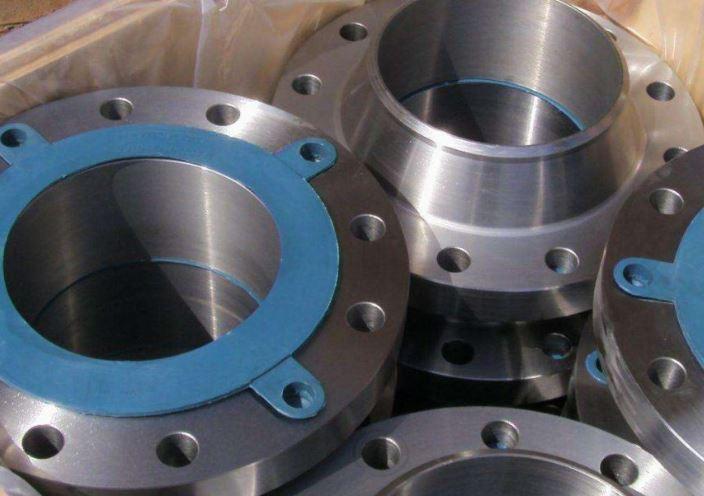ANSI (American National Standards Institute) flanges are commonly used in pipelines and piping systems around the world. Proper selection of ANSI flange materials is crucial for safe and leak-free operation. This article provides a guide for selecting the right ANSI flange materials for your application.

ANSI Flange Materials
ANSI flanges are available in different materials to suit various service conditions. Here are some of the most common ANSI flange materials:
- Carbon Steel: Carbon steel flanges are inexpensive and suitable for low-pressure applications below 300 psi. ASTM A105 is a common carbon steel material specification for ANSI flanges up to 24 inches in diameter.
- Stainless Steel: Stainless steel flanges like 304, 304L and 316L offer good corrosion resistance and can handle high temperatures. Stainless steel flanges conform to specifications like ASTM A182.
- Alloy Steel: Alloy steel flanges like ASTM A182 F22 and F91 have high strength and are used for high-pressure, high-temperature services in the power and oil & gas industries.
- Nickel Alloys: Nickel alloys like Monel 400, Inconel 600, and Incoloy 825 offer excellent corrosion resistance and are suitable for severely corrosive applications.
- Non-Metallics: Non-metallic flanges like PVC, PP, and PTFE lined flanges are used for highly corrosive chemicals like acids.
Key Factors for ANSI Flange Material Selection
The selection of proper flange material depends upon many factors in the application. Here are some key considerations:
Operating Temperature
Flange materials like carbon steel and stainless steel 316L can handle temperatures up to 850°F whereas alloy steel flanges can withstand much higher temperatures. Choose materials with sufficient temperature ratings.
Operating Pressure
Higher-strength materials like alloy steel and nickel alloys allow higher operating pressures compared to carbon steel. Choose pressure ratings accordingly.
Media Composition
If the media is corrosive such as acids or chlorides, corrosion-resistant materials like stainless steel or nickel alloys must be selected. Non-metallic lined flanges can also be considered.
Cost Considerations
Exotic alloy flanges are significantly more expensive than carbon steel. Choose the most economical material that meets the performance needs.
Fabrication Requirements
Some materials like high nickel alloys can be difficult to fabricate. Fabrication challenges must be considered while selecting flange materials.
Availability
While higher alloys offer better performance, availability in larger sizes may be limited. Material availability must be evaluated.
ANSI Flange Face Materials
In addition to flange body material, proper selection of flange face material is also important. Following are some guidelines on flange face materials:
- Soft facings like graphite or PTFE can be used for susceptible services to provide tighter seals and protection against galvanic corrosion.
- Hard facings like Stellite 6 or Inconel are applied on flange faces where erosion resistance is required.
- The flange face material should have a similar strength as the body material at the design temperature to avoid face deformation.
-
Ensure proper hardness of the flange face material for galling resistance, especially for stainless steel flanges.
Sourcing High-Quality ANSI Flanges from China
China has emerged as a major source of ANSI flanges due to competitive prices and large manufacturing capacities. Here are some tips for sourcing ANSI flanges from China:
- Work with established flange manufacturers in China who have a reputation for quality products and exporting capabilities.
- Review test certifications, material traceability documents, and quality procedures.
- Conduct factory audits of potential Chinese flange suppliers to evaluate their capabilities.
- Ensure proper packaging and export procedures to avoid damage during transportation.
- Work with a sourcing agent located in China who can conduct due diligence on behalf of foreign buyers.
By selecting a reliable flange supplier in China and verifying product quality, end-users can benefit from high-quality ANSI flanges at competitive prices.
Proper selection of ANSI flange materials is crucial for safe and optimal performance of flanged connections. Key factors like temperature, pressure, corrosion, cost, manufacturability and availability must guide the choice of flange materials. In addition, flange face materials must be compatible with the media and service conditions. Sourcing from quality-focused China flange manufacturers can help balance performance and cost requirements for ANSI flanged piping systems.

